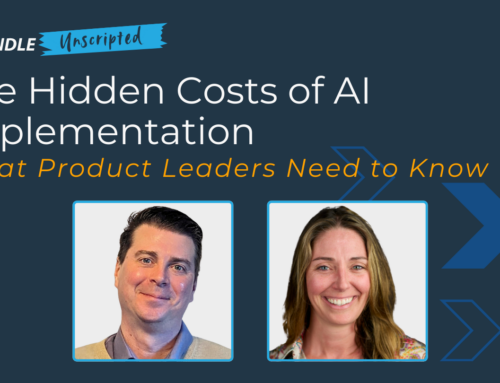It’s rare that a technology’s name aligns so perfectly with the advancements it brings. But when it comes to cloud computing, this is precisely the case.
The parallel reaches beyond its ability to accelerate product development, democratize access to AI tools, and boost digital security and sustainability. Cloud computing has taken the ways we work, build, and live to new heights. And the companies at the forefront of cloud innovation are the ones leading the way.
Freeing the Man from the Machine: The Employee Benefits of Cloud Migrations
Whether it’s cloud-native fintech or immutable health records, cloud architecture removes the burden of maintaining most servers, networks, and IT systems in-house.
The benefit for companies is obvious, alleviating unnecessary financial pressures and allowing them to pay only for the data, services, and energy they need. But what does it mean for the personnel who previously kept these machines running?
It’s not what you think. Migrating to the cloud frees employees to step into new roles, expand their skills, and explore innovations that benefit their customers and company.
This goes against the common fear that technological advances ‘steal’ jobs. In fact, research demonstrates that when new technologies boost productivity, they actually increase demand for skilled workers to help keep up with the related emerging market needs. Successfully making this transition comes down to how open companies and employees are to capitalizing on this evolution.
Building in the Sky: Cloud-Native Tools for Better Real-World Products
Cloud-based digital solutions that look, behave, and solve user problems just like their on-premises counterparts are just the start of what we can create with this decentralized technology. Really, the sky’s the limit.
An Agile Ascent: Improving the Speed of Customized Digital Transformations
The ever-expanding selection of tools, technologies, and services offered through cloud providers have unlocked a much more efficient, agile, and affordable approach to digital product development.
Now companies have the power to draw from a broad palette of ready made, proven solutions. This makes it more efficient to build cloud-native apps, websites, and digital business pipelines tailored to solve specific needs. Developers can spin up prototypes by assembling services from the cloud, testing these combinations, and then swapping out one approach for another just as quickly. The end result is highly specialized products with a faster time to market. And this entire iterative cycle is also extremely cost effective, allowing companies to pay only for what they’re using, instead of an entire suite of tools.
For regulated industries like fintech companies, this adaptive flexibility allows them to adjust their products in tune with fluctuations in the market, regulations, and — most crucially — consumer demands. The ability to keep up with these changes can mean the difference between achieving stratospheric levels of success, or never ever taking off at all.
Democratizing Access to AI in Healthcare — and Beyond
For the first time, cloud architectures are making it possible for companies of all sizes and growth stages to access machine learning, Natural Language Processing (NLP), and other AI technology thanks to cloud providers’ bespoke selection of services. AI is no longer the sole domain of companies with the resources to invest in-house. Not only does this equalize access to these next-gen technologies, it also opens up a much wider playing field for innovation and sets these technologies on an upward trajectory.
Healthcare is a prime example of an industry benefiting from the growing accessibility of AI tools. This includes everything from personalized patient care delivered through front-end NLP options and automated clinical record analyses to AI-powered diagnostic tools that allow faster and more accurate diagnoses.
Beyond Firewalls: Cloud-First, Security-First
Most people equate ‘the cloud’ with data stored somewhere and available on demand. This basic perception is also one of cloud computing’s superpowers.
By storing data ‘in the cloud’, companies can scale their capacity and usage up and down at will without having to adapt physical infrastructures or invest in hardware they don’t need, empowering them to meet up-to-the-second market demands. They can easily accommodate surges in the use of their digital services, without any threat of a server crash. Data can be shared instantaneously, allowing teams to collaborate across international lines to create or troubleshoot in real-time.
But what about data security? The fear of being hacked or losing data is a nightmare we sometimes hear about during these cloud conversations. But the reality is that data stored by cloud companies is vastly more secure than when managed on-premises. These large cloud services have the strictest of controls and greater capacity to screen for security than any one company, and 24/7 vulnerability checks are built directly into these systems.
From Power-Hungry to Planet-Friendly: Cloud Solutions for a More Sustainable World
We work and build in the digital space, but at the end of the day, our feet are still very firmly planted here on Earth. Cloud computing has real potential to improve the environmental outcome of our technologies, so we can continue to enjoy our shared home in the long run.
If you think of cloud services representing the coming together of potentially millions of businesses into distributed computing hubs, it’s easy to understand how the companies running them can affect better environmental practices on a much larger scale than individual companies can.
One reason for this is that cloud servers don’t typically have much downtime. When equipment is in constant use, no electricity is wasted sitting around waiting for a user to log on. This is compounded by the benefit of reduced numbers of data centers in favor of server infrastructures designed for efficiency. And leaders in the cloud space are making concerted efforts to use renewable power sources and adopt other sustainable practices.
These are just a few of the many ways transitioning to a cloud-first approach could reduce US energy consumption by up to 87%.
We’re All Cloud Consultants: Moving Forward Together
When it comes to cloud computing, we’re already on the upward swing toward new improvements in the ways we work, build, and live.
But the heights we’ll reach come down to us, the humans behind the helm. Will we find new ways to give our talent space and skills to invent new ways to use the cloud? Will we embrace shared advancements in cloud-based tools, AI, and data sharing? And will we hold cloud providers accountable in the move toward carbon and energy neutrality?
You tell me.
To learn more about the potential of cloud computing for your company, follow Ascendle on LinkedIn.






